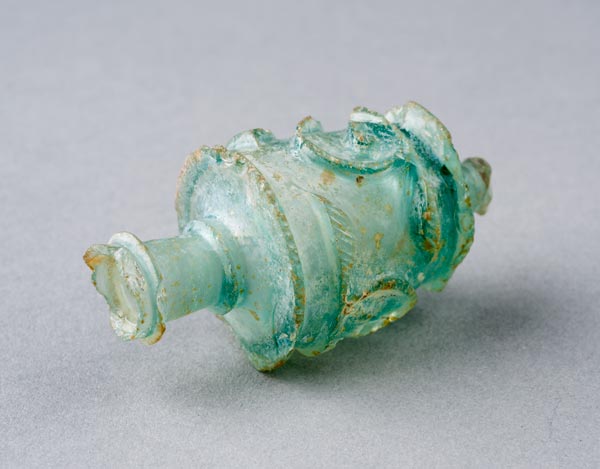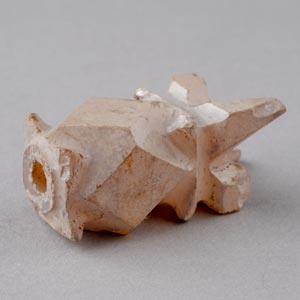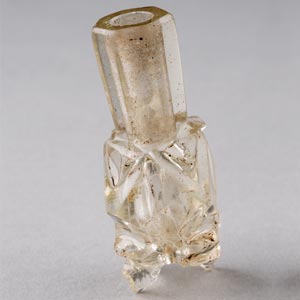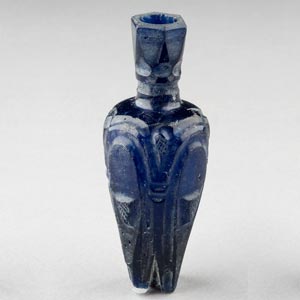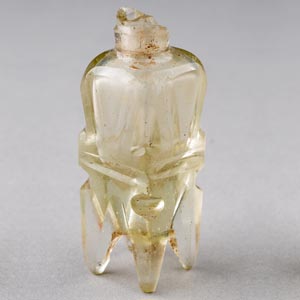Bottle
The Show

Bottle 10th–11th centuries, Egypt Cut glass Kelsey Museum of Archaeology, 1968.2.63
Rather than a molar tooth, this glass cosmetic container resembles a miniature amphora. The delicately carved aqua-colored glass vial mimics the cut-relief work of rock crystal objects made in Egypt during the 10th and 11th centuries. These types of small glass vessels were used to store unguents, oils, and cosmetics. For example, kohl, a black powder, would be stored in small flasks and applied to the eyes using a wetted applicator—much like modern-day eyeliner. Perfumes and essential oils have played important aromatic and olfactory roles in the Islamic world throughout the centuries. For these reasons, a variety of vessels have been produced, from rosewater sprinklers to perfume bottles.
Bibliography: Georges 1911; Jenkins 1986, 24–25, fig. 23; Scanlon 1964; Scanlon and Pinder-Wilson 2001, 91–104, fig. 43g; Pinder-Wilson and Scanlon 1973, 24–28; Carboni and Whitehouse 2001; and Carboni 2001, 98–100, cat. 27a–c, 124–127, cat. 2.28a–q.
Return to the Show